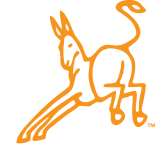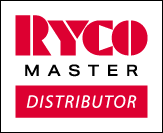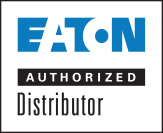Industrial Hose Usage
Industrial hoses are surprisingly versatile. While their primary use is in hydraulic systems, there’s a wide range of hoses available for all job sites and project types.
Basically, ‘industrial hose’ is a general term used to describe a range of products that carry different types of media from one area to another. These hoses are available in all shapes, sizes, materials, and capabilities. The one you choose largely depends on what media is being transferred, how much of that media is being transferred, and the pressure necessary to transfer it.
Industrial Hose Types
So what kind of industrial hose is the right one for you? First, you must consider the intended application. There are a handful of common uses for industrial hoses, including:
- Air hoses - Specifically designed to deliver pressurized air and are regularly used in compressors, air blowers, and pneumatic lines.
- Water hoses - Used to deliver water for use in cleaning, gardening, irrigation, and heating and cooling; there are also special water hoses designated for high-temperature media like hot water and steam.
- Hydraulic hoses - High-pressure hose that delivers force to its target; intended for use in a range of industrial settings, such as powering heavy machinery.
- Chemical hoses - Extremely resilient hoses designed to help transport dangerous substances like acid and other toxic compounds.
Choosing The Right Hose for Your Needs
There is no single “best” industrial hose. It’s impossible to identify a one-size-fits-all hose that will work for everyone, so the “best” hose is entirely dependent on your individual needs. There are, however, certain brands, materials, and sizes that work better for specific applications. The trick is finding the industrial hose that offers both quality manufacturing and specialized performance to meet your needs.
So what factors should you consider when choosing your hose? Well, there are seven important ones you should keep in mind when making your selection. These are:
- Application - what setting will the hose be used in, and for what purpose?
- Media - what fluid will the hose be transporting?
- Temperature - what temperatures, both internal and external, will the hose be subjected to?
- Pressure - how much pressure will be necessary to move the media to its destination?
- Size - how large, in diameter, should the hose be for optimal media transfer?
- End fittings - how will the end of the hose be fitted into the rest of the equipment?
- Delivery - how will the hose deliver the fluid to its destination?
Once you’ve put some thought into these questions, it’s time to choose a hose. This part can be a little tricky because even though you know what you’re looking for performance-wise, you still have to select the product that satisfies these qualifications.
Industrial Hose Materials
There are many materials to choose from, and these materials have different properties that make them uniquely suited to different work environments and uses. Commonly-used materials include:
- Coated fabric
- Poly-materials, including polyethylene, polyurethane, polypropylene, and polyvinyl chloride (aka PVC)
- Silicone
- Thermoplastic rubber
If all this information seems a bit overwhelming, don’t worry—we can help! At
Action Supply, our knowledgeable and professional staff are well-equipped to answer all your questions. Come
check out our products in-store today, and we’ll help you get the job done right.





